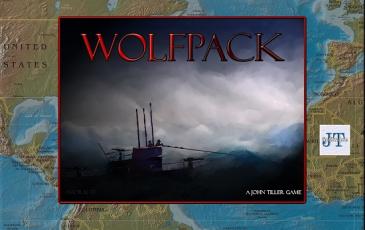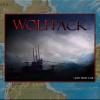Paukenschlag! Zapp and Hardegen off Cape Hatteras - WDS Wolfpack

 0 - 0 - 0
0 - 0 - 0

| Rating: | 0 (0) |
| Games Played: | 0 |
| SM: | 2 |
| Turns: | 3 |
| Type: | Stock |
| First Side: | Allied (NC_WP) |
| Second Side: | German (NC_WP) |
Paukenschlag! January 18-19, 1942
Four days into the Paukenschlag (tr. "Roll/Beating of the Drum!") offensive on the North American east coast and Adm. Doenitz must have been pleased. Finding essentially pre-war conditions, the U-boats found easy targets and put them to the bottom. No escorts, few air patrols, no convoys, ships steaming independent, most with full navigation lights silhouetted against a shoreline still marked by lit navigation aids and cities/towns with no thought of blackout. Little wonder this soon became known to the U-boat men as "The Second Happy Time."
Kplt. Reinhard Hardegen of U-123 had already sunk three vessels and was only getting started. Now KKpt. Richard Zapp was about to strike. He was assigned the rich target area near Cape Hatteras. Cape Hatteras, the sting of islands and mainland which pushes easternmost into the Atlantic is a natural convergence zone for virtually all traffic from the Southern US, the Gulf of Mexico, and the Caribbean. Many, many merchantmen and vessels met their doom in this region during the first six months of 1942. Zapp would begin the attacks on January 18 by sinking the tanker Allan Jackson. Hardegen, ordered south, joined him on 19 January having seen the loom of the fires of Zapp's first sinking. Between the two boats, five merchant vessels met their end within two days. After only 8 days on station, U-123 having expended all torpedoes, most of her ordnance, and much of her supplies, turned for home. But she would still prove deadly with two more kills enroute - - - by gunfire!
This scenario again conflates the attacks of these successful boats and simulates the north-south traffic along Cape Hatteras. U-66 should pick up first contact but U-123 will also have targets. USS Roe, DD-418 historically retrieved survivors of Zapp's first kill and so is in the area. Perhaps she will have a more influential effect?
Four days into the Paukenschlag (tr. "Roll/Beating of the Drum!") offensive on the North American east coast and Adm. Doenitz must have been pleased. Finding essentially pre-war conditions, the U-boats found easy targets and put them to the bottom. No escorts, few air patrols, no convoys, ships steaming independent, most with full navigation lights silhouetted against a shoreline still marked by lit navigation aids and cities/towns with no thought of blackout. Little wonder this soon became known to the U-boat men as "The Second Happy Time."
Kplt. Reinhard Hardegen of U-123 had already sunk three vessels and was only getting started. Now KKpt. Richard Zapp was about to strike. He was assigned the rich target area near Cape Hatteras. Cape Hatteras, the sting of islands and mainland which pushes easternmost into the Atlantic is a natural convergence zone for virtually all traffic from the Southern US, the Gulf of Mexico, and the Caribbean. Many, many merchantmen and vessels met their doom in this region during the first six months of 1942. Zapp would begin the attacks on January 18 by sinking the tanker Allan Jackson. Hardegen, ordered south, joined him on 19 January having seen the loom of the fires of Zapp's first sinking. Between the two boats, five merchant vessels met their end within two days. After only 8 days on station, U-123 having expended all torpedoes, most of her ordnance, and much of her supplies, turned for home. But she would still prove deadly with two more kills enroute - - - by gunfire!
This scenario again conflates the attacks of these successful boats and simulates the north-south traffic along Cape Hatteras. U-66 should pick up first contact but U-123 will also have targets. USS Roe, DD-418 historically retrieved survivors of Zapp's first kill and so is in the area. Perhaps she will have a more influential effect?





















